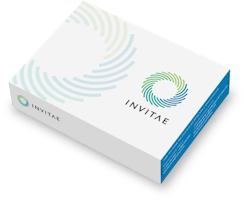
Invitae NF1-related Conditions Test
Test code: 01708 •
Test description
This test analyzes the NF1 gene, which is associated with a spectrum of conditions that includes neurofibromatosis type 1, neurofibromatosis-Noonan syndrome (NFNS), and Watson syndrome. Neurofibromatosis type 1 is a neurocutaneous disorder associated with an increased risk of several types of benign and malignant tumors. Primary features include multiple cafe-au-lait spots, inguinal freckling, and neurofibromas. This condition is highly variable in its expression. There is an increased risk for central nervous system neoplasms and other malignancies including female breast cancer, gastrointestinal stromal tumors, pheochromocytoma, and soft tissue sarcomas. NFNS is characterized by classic neurofibromatosis type 1 symptoms in addition to short stature, distinctive facial features, broad neck, congenital heart defects, speech delay, and pectus anomaly. Watson syndrome is characterized by pulmonic stenosis, cafe-au-lait spots, macrocephaly, Lisch nodules, intellectual disability, and short stature. Genetic testing of this gene may establish or confirm a diagnosis and help guide treatment and management decisions. Many of the typical signs and symptoms of NF1-related conditions evolve with age, but genetic testing of the NF1 gene can confirm a diagnosis in early childhood. Identification of a disease-causing variant would also guide testing and diagnosis of at-risk relatives.
This test is specifically designed for heritable germline mutations and is not appropriate for the detection of somatic mutations in tumor tissue.
Ordering information
Turnaround time:
10–21 calendar days (14 days on average)New York approved:
YesPreferred specimen:
3mL whole blood in a purple-top EDTA tube (K2EDTA or K3EDTA)Alternate specimens:
Saliva, buccal swab, and gDNA are also accepted.Learn more about specimen requirementsRequest a specimen collection kitClinical description
To view the complete clinical description of this panel, click here.
Assay information
Invitae is a College of American Pathologists (CAP)-accredited and Clinical Laboratory Improvement Amendments (CLIA)-certified clinical diagnostic laboratory performing full-gene sequencing and deletion/duplication analysis using next-generation sequencing technology (NGS).
Our sequence analysis covers clinically important regions of each gene, including coding exons and 10 to 20 base pairs of adjacent intronic sequence on either side of the coding exons in the transcript listed below, depending on the specific gene or test. In addition, the analysis covers select non-coding variants. Any variants that fall outside these regions are not analyzed. Any limitations in the analysis of these genes will be listed on the report. Contact client services with any questions.
Based on validation study results, this assay achieves >99% analytical sensitivity and specificity for single nucleotide variants, insertions and deletions <15bp in length, and exon-level deletions and duplications. Invitae's methods also detect insertions and deletions larger than 15bp but smaller than a full exon but sensitivity for these may be marginally reduced. Invitae’s deletion/duplication analysis determines copy number at a single exon resolution at virtually all targeted exons. However, in rare situations, single-exon copy number events may not be analyzed due to inherent sequence properties or isolated reduction in data quality. Certain types of variants, such as structural rearrangements (e.g. inversions, gene conversion events, translocations, etc.) or variants embedded in sequence with complex architecture (e.g. short tandem repeats or segmental duplications), may not be detected. Additionally, it may not be possible to fully resolve certain details about variants, such as mosaicism, phasing, or mapping ambiguity. Unless explicitly guaranteed, sequence changes in the promoter, non-coding exons, and other non-coding regions are not covered by this assay. Please consult the test definition on our website for details regarding regions or types of variants that are covered or excluded for this test. This report reflects the analysis of an extracted genomic DNA sample. In very rare cases, (circulating hematolymphoid neoplasm, bone marrow transplant, recent blood transfusion) the analyzed DNA may not represent the patient's constitutional genome.
You can customize this test by clicking genes to remove them.
Primary panel
The RASopathies exhibit several overlapping phenotypic features due to their common underlying Ras/MAPK pathway dysregulation. NF1 overlaps clinically with Legius syndrome. Both syndromes are characterized by the presence of multiple café-au-lait spots and axillary and inguinal freckling, but NF1 has the additional features of neurofibromas, Lisch nodules, and optic gliomas. SPRED1 is the gene associated with Legius syndrome. Depending on the clinical presentation of the patient, clinicians may wish to include SPRED1 in this test for a broader analysis.
Question about billing?
Find answers